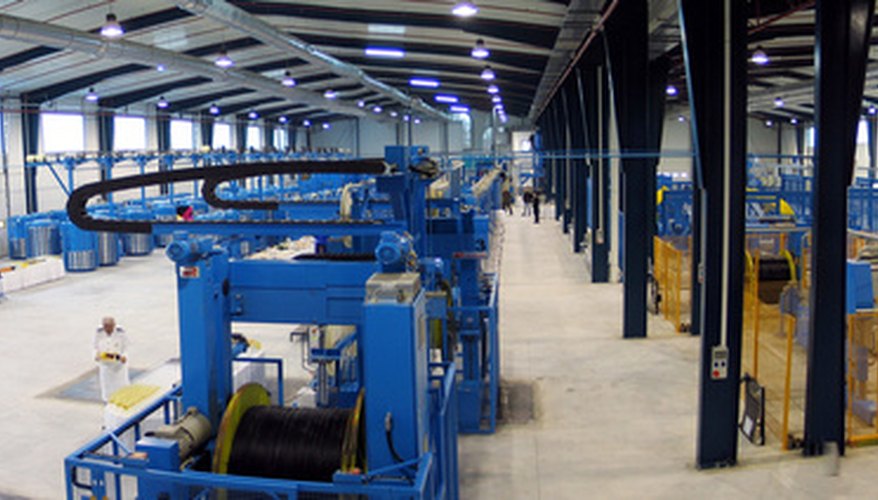The purpose of a SWOT analysis of the manufacturing industry is to identify the key factors that affect the success of the industry. The four factors considered a part of a SWOT analysis are: strengths, weaknesses, opportunities and threats. A SWOT analysis estimates the risks for a particular industry.
Strengths
The strengths of the manufacturing industry are that it is relatively stable. Although the demand for manufacturing tends to fluctuate with the ups and downs of the economy, it is characterised by regular periods of recovery following any downturns. Moreover, manufacturing has become highly efficient over the last century, with the ability to maximise both the productivity of the workers and machines to maximise profits.
Weaknesses
A weakness of the manufacturing industry is that much of it is built on the production of non-essential goods. This means that a severe downturn in the economy can have a crippling effect on it. Another weakness is that it is a mature industry. This means that there is heavy competition and little room for growth. As a result, the manufacturing industry can be a cash cow for those who are already in it but may be unattractive to new entrants.
- A weakness of the manufacturing industry is that much of it is built on the production of non-essential goods.
- As a result, the manufacturing industry can be a cash cow for those who are already in it but may be unattractive to new entrants.
Opportunities
Opportunities in the manufacturing industry are in the technology and biotechnology areas. These are growing market segments with higher profit margins. Additionally, they are knowledge-dependent market segments that require highly specialised workers, which makes it difficult for low wage countries to compete in this market segment, thereby providing an edge to more industrialised countries. Foreign markets with a growing middle class are providing opportunities for technology and biotechnology manufacturers to increase their profitability through exports.
- Opportunities in the manufacturing industry are in the technology and biotechnology areas.
- Additionally, they are knowledge-dependent market segments that require highly specialised workers, which makes it difficult for low wage countries to compete in this market segment, thereby providing an edge to more industrialised countries.
Threats
The largest threats to the manufacturing industry in developed nations are from low wage countries. The low wages of these countries have made it impossible for many businesses in developed nations to compete, requiring them to either close or move overseas to find cheap labour. Increasingly, India is an even bigger threat to the manufacturing industry, with its ability to supply highly educated workers at low wages to fill roles in the high-tech manufacturing market segment.
Warning
Be aware that a SWOT analysis of the manufacturing industry does not necessarily reflect the position of your firm within the industry. It is recommended that you conduct a SWOT analysis of your particular manufacturing firm to understand the strengths, weaknesses, opportunities and threats inherent to your business. It is possible that your firm could be in a stronger position than the manufacturing industry as a whole or that it could be much worse off.
